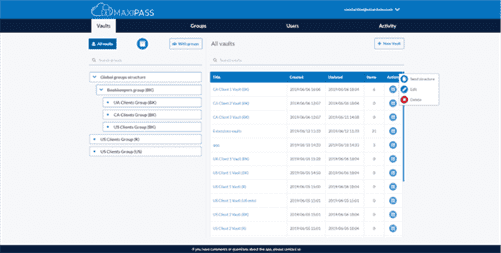Decision coverage is a frequently used code testing method which is used to validate the exposure of the limitations of various decision trees in the program. The decision trees are typically derived from the conditional statements, the looping statements and the Boolean expressions or values in the program. The testing process in this case is carried out by validating all the possible execution flow through the said conditions and looping statements. Hence the name ‘Decision Coverage’ testing was given to this process. In other words, the Decision Coverage testing is a requisite for certifying the modular code to have included the potential functional endpoints. Condition/decision coverage measures whether you exercise every control structure with every
possible decision outcome as well as every possible condition outcome.
- In most cases, code coverage system gathers information about the running program.
- If such paths actually occur in the run time, they are counted and reported as “unexpected” ones.
- Instrumentation is also placed along infeasible paths unnecessarily [4].
- Skipping this stage can seriously reduce the effectiveness of the program in that module.
- Tikir and Hollingsworth use a dynamic technique for node coverage with Dyninst [6,26].
- In this hypothetical example, that third critical test case would expose that latent bug.
Just as the HCFA relies on the Public Health Service, many private insurers rely on the appropriate medical societies for guidance in addition to their own internal medical advisory panels. This is why full decision coverage guarantees full statement coverage, but not the other way around. With statement coverage you just check that with a correct password you can use the system. With branch coverage you also test that with an incorrect password you will not enter the system.
Exception / Error Handling in Software Testing
Code coverage is a measure which describes the degree of which the source code of the program has been tested. It is one form of white box testing which finds the areas of the program not exercised by a set of test cases. It also creates some test cases to increase coverage and determining a quantitative measure of code coverage. In this technique, it is tough to get 100% coverage because sometimes expressions get complicated. All these methods cover the most important combinations and very much similar to decision coverage.
Thus, a submission to the insurer will require substantial data regarding not only the safety and efficacy of the device or biologic but also its value in the overall scope of care of that disease or condition. Considered will be not only what is done but what other types of services are not done. The decisions are https://www.globalcloudteam.com/ obviously affected by the price that is being sought. Statement coverage is said to make sure that every statement in the code is executed at least once. Decision/branch coverage is said to test that each branch/output of a decisions is tested, i.e. all statements in both false/true branches will be executed.
Line Coverage or Statement Coverage
A number of techniques have been developed based on instrumentation in an attempt to reduce the overheads of program monitoring. This section presents an overview of common commercial tools as well as recent research in static and dynamic instrumentation approaches. Usually, coverage is not an issue for inpatient procedures, since the assignment of a procedure code to an MS-DRG includes recognition of its medical necessity.

100% decision coverage implies both 100% branch coverage and 100% statement coverage. The majority of existing coverage tools implement statement/block/line coverage, decision coverage, method/function coverage, and class coverage. Some of these include CoverageMeter [1], BullseyeCoverage [15], Clover [16], gcov [17], Emma [18], JCover [19], IBM’s Rational Suite [20], and Cobertura [21].
Function Coverage
Branch Coverage technique involves checking whether every possible path or branch is covered. Relational boundary coverage examines blocks, Stateflow charts, and MATLAB function blocks that have an explicit or implicit relational operation. D. It is a metric that give a true/false confirmation if all statements are covered or not. Next we will identify all decision coverage the combinations of true or false, with both conditions each of which can be true or false. In order to stay track of which combinations we’ve we’ll have alternate true or false on rock bottom row, put two trues then falser on the row above the bottom row. This now covers both of the decision outcomes, True (with Test 2_1) and False (with Test 2_2).
Decision coverage determines the percentage of the
total number of decision outcomes the code exercises during execution. Use this type of coverage
to determine whether all decisions, including branches, in your code are tested. Decision coverage technique is one of the white box testing technique which gives the decision coverage to Boolean values.
Why use Code Coverage Testing?
The goal of condition coverage is to check individual outcomes for each logical condition. Condition coverage offers better sensitivity to the control flow than decision coverage. In this coverage, expressions with logical operands are only considered. Branch Coverage is a white box testing method in which every outcome from a code module(statement or loop) is tested. The purpose of branch coverage is to ensure that each decision condition from every branch is executed at least once.

To calculate Branch Coverage, one has to determine the minimum number of paths which can make sure that all the sides are covered. In this case there is no single path which will make sure coverage of all the edges at once. Let’s suppose that we already have the following test, which gives us 100% statement coverage for code sample 4.3.
Verification and validation of flight control system airborne software
In Statement coverage I need to execute all statements so I guess it can be only done by running all possible ways. Decision coverage or branch coverage may be a kind of testing methodology which aims to makes sure that every condition among the possible branch from each decision point is executed. It helps in validating all branches in the code making sure that no branch leads to abnormal behaviour of the application. Decision coverage, also known as branch coverage, is a testing technique that ensures that each possible branch from each decision point is tested at least once, ensuring that all reachable code is executed. That is to imply, every decision is made in both true and false forms. It aids in verifying all of the code’s branches, ensuring that none of them lead to abnormal application behavior.

By employing RNA-seq technology as a diagnostic tool, coding variants which were often overlooked by WES and WGS could be identified and later prioritized (Peymani et al., 2022). The American Hospital Association’s (AHA) Hospital Technology Series is a program that focuses on hospital devices and equipment from the hospital administrator’s point of view. The evaluations are concerned primarily with the cost and service implications of technologies that are entering clinical practice. Evaluations are based on analysis of technical reports and the professional literature and on selected and focused interviews with technical and hospital experts. Coverage testing tools can also be used for program profiling to identify heavily executed parts of programs with potential uses in compiler optimization, program refactoring, performance-related debugging, etc. Many tools, including eXVantage [23], CodeTEST [24], Dynamic Code Coverage, JCover, PurifyPlus, and Semantic Designs [25], support this feature [22].
Relational Boundary Coverage
Decision Coverage Evaluation acts as a crucial test coverage method as this code coverage method is one step above other coverage testing methods. It gives a better perception of the operations hidden under the program against the functionality that is expected by the client. As it can include the Boolean operations, it is most often chosen over the Branch coverage process. Decision coverage covers all possible outcomes of each and every Boolean condition of the code by using control flow graph or chart. Similar to Line Coverage—except that with Block Coverage, the unit of measured code is a basic block (see the definition of this term in the previous table).
